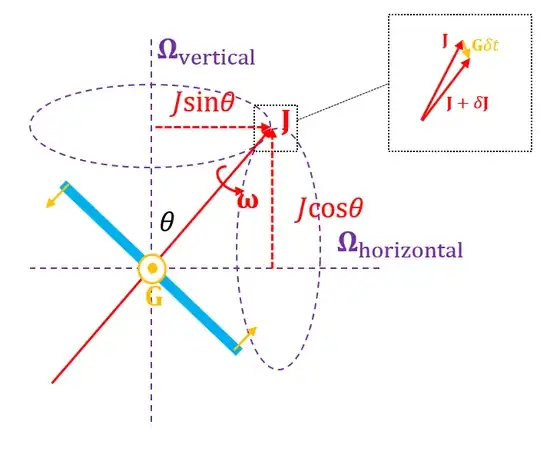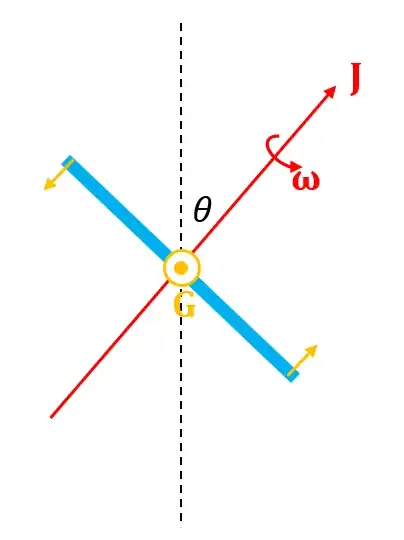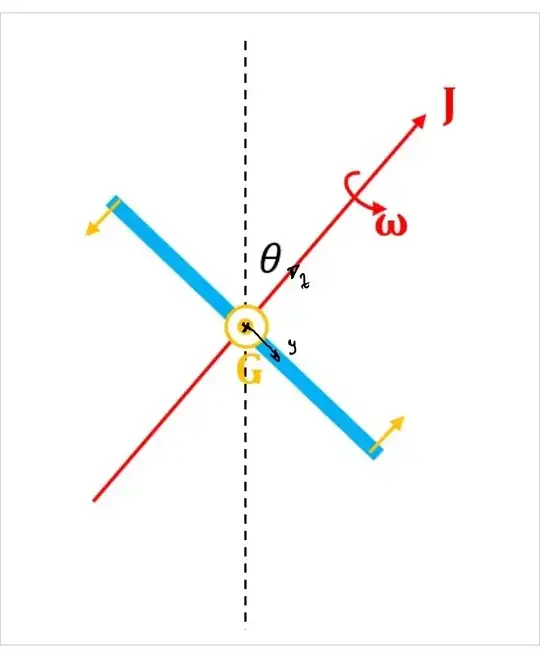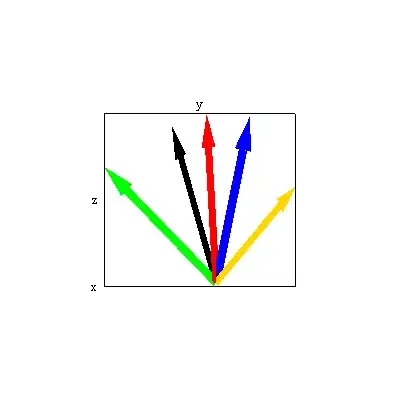I'm calculating the (instantaneous) rate of precession of a symmetric top (i.e. $I_1=I_2\neq I_3$) that is tilted at angle $\theta$ to the vertical if a torque $\vec{G}$ is applied, as shown below:
It has initial angular velocity $\vec\omega$ about the 3rd principal axis, and initial angular momentum $\vec{J}$ about the same axis. The torque vector, $\vec{G}$ is coming out of the screen.
By adding $\delta \vec{J}=\vec{G}\;\delta t$ to $\vec{J}$, I can see that the angular momentum vector is going to move in a direction coming out of the screen. However, I don't know how to rationalise where it's going to go next - is it going to precess about the vertical axis or the horizontal axis? Why would it prefer one or the other? The precession frequencies in each case would be
$$\Omega_\text{vertical} = \frac{G}{J\sin\theta}\;\;\;\;\;\;\;\;\;\Omega_\text{horizontal}=\frac{G}{J\cos\theta}$$
See figure below:

EDIT: For context, I am trying to find the precession of the Earth due to the Sun alone. I am modelling the Earth as a symmetric top exactly as above, and the torque comes from the tidal forces on the Earth from the Sun. I have already calculated the properties of the disc and the torque, I am just stuck on rationalising why the angular momentum vector (i.e. the South -> North vector) should rotate about an axis perpendicular to the Earth-Sun radius, rather than parallel to it). I think the question remains the same.


